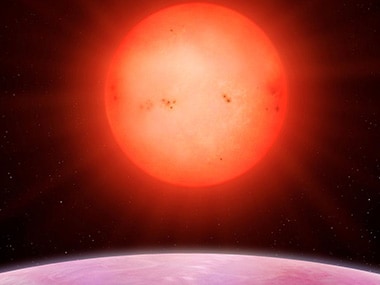Astronomers have discovered an unusually large exoplanet in orbit around a relatively small star, challenging the conventional theories of planet formation. The planet is about the same size as Jupiter, but with 20 percent less mass. It is in orbit around a star that is about half the size and mass as that of the Sun, classified as an M-Dwarf. It was previously thought that M-Dwarf stars could only host small rocky planets such as Mars or Earth. M-Dwarf stars are among the most common types of stars in the universe. [caption id=“attachment_4187191” align=“alignleft” width=“380”]  NTGS-1b. Image: Queen’s University Belfast.[/caption] The exoplanet is about 600 light years away, has been given the designation of NTGS-1b and belongs to a category of stars known as **Hot Jupiters** . Astronomers found the planet using the state of the art Next-Generation Transit Survey (NTGS) located in the Paranal Observatory in Northern Chile, in the harsh conditions of the Atacama desert. NTGS-1b is named after the new facility, and is the first exoplanet to be found by NTGS. The researchers were able to identify the planet by monitoring patches of the night sky over many months. Dr Daniel Bayliss, lead author of the research says, “The discovery of NGTS-1b was a complete surprise to us — such massive planets were not thought to exist around such small stars. This is the first exoplanet we have found with our new NGTS facility and we are already challenging the received wisdom of how planets form. Our challenge is to now find out how common these types of planets are in the Galaxy, and with the new NGTS facility, we are well-placed to do just that.” The exoplanet has a surface temperature of around 580 degrees Celsius. Astronomers looking for dips in brightness to find a planet noticed that the planet was passing in front of the star every 2.6 days. This means that an entire year on NGTS-1b lasts only two and a half Earth days. The exoplanet is in a very close orbit around its host star, at only about three percent of the distance between the Earth and the Sun. The findings have been published in the Monthly Notices of the Royal Astronomical Society.
The exoplanet is about 600 light years away, has been given the designation of NTGS-1b, and belongs to a category of stars known as Hot Jupiters.
Advertisement
End of Article


)



